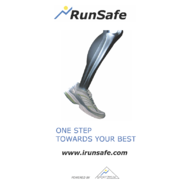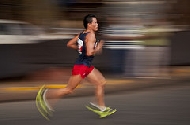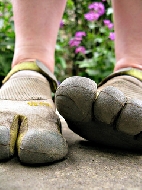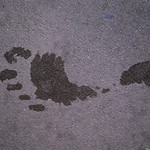Cadence, foot strikes and stride length - step by step
Posted by Anthony Luke MD, MPH on April 22, 2022

The Starting Line: How do cadence and stride length relate? For beginner runners running with a more frequent shorter stride is often preferred rather then a long stride. A popular concept to think about now is considering your cadence which is how often your foot hits the ground in one minute. Ideally your stride should be close to 170-180 foot strikes per minute so each foot lands 85-90 times ea...
Footstrike Patterns and Running Injury Rates
Posted by Rich Souza PT, PhD on April 8, 2013

The Starting Line: Does foot strike pattern affect injury predisposition? A recent study by Daoud and colleagues at Harvard University set out to determine the difference between rearfoot strike and forefoot strike on types and rates of injuries among runners. The study population consisted of 52 male and female, high-level intercollegiate track and cross-country runners, competing in distances ranging ...
Managing Knee Osteoarthritis for Runners
Posted by Alex Hetherington CP on March 26, 2013

The Starting Line: For knee osteoarthritis, what can be done for the pain, and should you keep running? Knee osteoarthritis (OA) is one of the most common musculoskeletal disorders, and a leading cause of knee pain and disability. It is characterized by the degeneration of articular cartilage at the knee joint. Knee OA more often affects the medial compartment (inside of knee) because of the greater loa...
Natural Running
Posted by Nicole Haas PT, DPT, OCS on March 4, 2013

The Starting Line: Is there one right way to run naturally? There is a growing trend in research toward running barefoot and landing on the forefoot as a way to reduce injury. This research indicates that due to the discomfort of landing on a bare heel, the transition to a forefoot strike happens naturally when you kick off your shoes. There is also a growing consensus that running in minimalist shoes ...
Barefoot Running Effects on Injuries
Posted by Toran MacLeod PT, PhD on January 14, 2013

The Starting Line: Can running barefoot help prevent running injuries? Traditional running shoes have cushioning that allows for the comfortable rearfoot strike pattern present in 80% of runners. This rearfoot strike is associated with an impact spike in the vertical ground reaction force, which creates high loading rates within the leg. Over time, these repetitive loading events may lead to injuries su...

